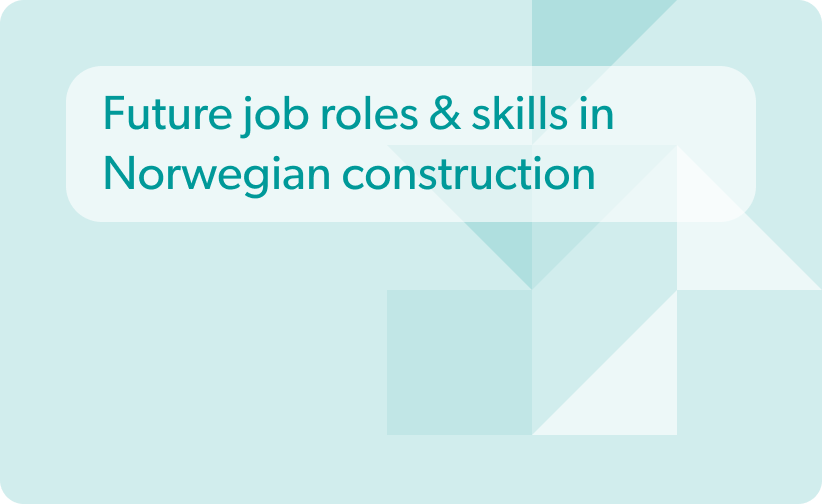Twelve labor market trends for 2023
2022 was an interesting year in the workplace. We saw the great resignation, the great reassessment, the great reshuffling, the great decay, and moonlighting. Moreover, the active HR community increasingly began to raise the issues of quiet quitting and quiet firing. These buzzwords reflect today’s dynamic and ever-changing work environment — a workplace impacted by the ongoing pandemic, economic uncertainty, and global conflict. Not to mention workers who demand more personalized benefits, flexibility, and leadership development opportunities from their employers.
Gartner estimates HR leaders face historic levels of disruption, and their time frame from planning to action continues to shrink while labor market imperatives grow. So let’s try to predict how 2023 will turn out. What will it take for HR to attract, retain, and develop the best talent? And what initiatives should HR leaders include in their plans for 2023?
Find out why people are quiet quitting
Get more insights about quiet quitting. We surveyed employees and subscribers of HRForecast on reasons for quiet quitting and what has helped them cope with it.
How global events may impact HR in 2023
Here, we briefly consider general expectations for 2023 and their impact on the labor market.
The year 2022 was marked by a rise in prices and a decrease in the purchasing power of money. This suggests that 2023 will be a recessionary year as central banks try to minimize inflation. Thus, the goal for employees will be to reduce the cost of living and for employers to cut company costs. While this may prevent organizations from hiring as usual, the gap between supply and demand in the labor market will remain tight. In this context, workers will negotiate for better compensation and benefits.
Therefore, remote or hybrid work will remain a vital workplace trend in 2023, benefiting businesses and workers by reducing costs.
Upskilling and soft communication skills gained a lot of interest in 2022; economic uncertainty is expected to continue in 2023 and lead to the search for employee retention strategies, demonstrating the organization’s desire to stimulate employee development. In addition, today’s organizations have embraced the desire of employees to learn continuously, so we will see the introduction of unique training and development programs that allow companies to reap the benefits of developing highly skilled teams.
Russia’s invasion of Ukraine also led to new changes in the global labor market, causing a big gap between junior and middle specialists in the IT industry. New AI and robotic technologies and low-code and no-code trends can participate in the development market. However, competition among trainees and junior specialists without work experience is incredibly high. Companies that used to hunt for young tech talent at universities and schools are becoming more discerning. As a result, some companies that previously had internship options began closing those opportunities in 2022. However, despite all this, the need for developers and other technical professionals will continue to grow worldwide in the next ten years. Let’s see how these changes will impact the HR department.
Will recruiting be more complicated?
You’re not alone if you feel like you’ve been on a roller coaster ride lately. Just a year ago, hiring was prolific, and recruiters were in high demand. But now that the economy is cooling, LinkedIn’s Global Talent Trends October 2022 report shows that hiring is slowing worldwide.
This rapidly changing hiring landscape means that recruiting teams should change their strategies and constantly learn new skills. But while this presents challenges, there is also good news: According to talent leaders, talent engagement’s role in navigating the pandemic and the Great Reshuffle has given them a meaningful seat at the table and more influence on the executive team.
Here are the recruiting-related trends we should expect in 2023:
- Making every hire count. More employers are carefully considering who to hire and are increasingly looking within the organization to fill open positions. In addition, many hire contract workers to keep costs down and more easily navigate when demand rises and falls.
- Consideration of candidates’ priorities. To hire the best talent, recruiters should understand what candidates want: a good salary, balance, and flexibility. Among the main priorities for candidates are remuneration, the balance between work and rest, flexibility and professional development, and pay transparency.
- Continued focus on strategic priorities. Companies continue to invest resources in areas such as candidate experience, internal mobility programs, and DEI (diversity, equity, inclusion). That’s all because retraining existing workers costs less than filling open positions.
More data-driven workplace for people analytics
The world has become even more technological in 2022. And more business areas depend on big data and analytics. Data analysts are in demand, and for a good reason. An IBM study shows that nearly 2.5 quintillion bytes of data are created every day. And someone has to finish all this data generation. Therefore, people analytics will face significant challenges in 2023. More and more organizations will turn to big data specialists in the form of people analytics to recruit, retain, and make essential employee decisions.
“Without data, you’re just another person with an opinion.” — W. Edwards Deming
To highlight the directions for people analytics, we used research by David Green, who has been compiling his annual set of trends for eight years. We chose three trends from the list that are new for 2023.
- Empower employees, managers, and leaders with people data. Research by Deloitte and Insight222 found that 90% of companies worldwide are moving to a skills-based workforce planning approach. HR can lead the way as companies develop new operating models and revamp work structures to shift to a skills-based organization. McKinsey reports that skills-based hiring is five times better at predicting job performance than education-based hiring.
- Redesign of work. Redesigned work will be more efficient, with greater business impact, and more energizing and humane for the worker. In 2023, business leaders will incorporate automation into workforce planning and flexibility as we move to new work models and streamlined organizational hierarchies. Besides all of the above, leaders should consider the implementation of a four-day week as the continuation of a trend from previous years.
- Transform HR through automation. If two years ago business leaders were wondering whether to use people analytics tools, today more and more HR teams are implementing tools that help them make smarter decisions, do more with less, and shift from manual, repetitive tasks to a more strategic role in the business – through innovation. This saves time on non-value-added tasks and allows you to focus on people activities such as employee engagement, employee experience, and culture, completely transforming HR into an even more valuable business partner.
Impact on workforce planning
Given the value of talent, it’s clear that in 2023, talent retention will be critical in workforce planning. Upskilling and reskilling employees and generally providing opportunities for career mobility can make a big difference, but too many organizations don’t know how to create such a culture of growth.
As we’ve said, employers will continue to work hard to find the right skills. However, they risk losing employees and competitiveness if they fail to develop their top talent to achieve key roles effectively. Therefore, in 2023, HR leaders must offer a new value proposition for employees that is adapted to the changing times; growth, development, and internal mobility will be key components.
In 2023, workforce planning teams will focus their attention in three directions:
- Flexibility is a must. Employees like flexibility in the workplace and don’t want to give it up. In McKinsey’s American Opportunity Survey, 58% of working respondents say they prefer to work at least a few days a week remotely. Additionally, 87% of employees offered at least some flexible work options would choose to work three days per week remotely. One more concept that has kept gaining momentum is the four-day workweek. A recent study published on Forbes of more than two dozen companies that tested a four-day week showed increased sales, reduced burnout, and less absenteeism. Even more remarkable, almost all participating employers plan to continue the four-day workweek.
- Workplace surveillance. The rise of remote work is also causing an increase in surveillance activities in the workplace. As flexible working becomes the norm, in 2022, 60% of companies with remote employees have already implemented monitoring software to track their workforce’s activity, and 17% of business leaders say they are considering trying such software in 2023. According to a recent Spherical Insights & Consulting study, the global employee monitoring software market was valued at USD 1.1 billion in 2021 and is expected to reach USD 2.1 billion by 2030. However, according to Microsoft chief executive Satya Nadella, this workplace trend reflects “productivity paranoia.” Maybe business leaders should look for other options for cooperation with employees.
- Mental well-being still is one of the top priorities. A survey by Gympass, an employee well-being platform, shows that almost half of workers (48%) say their well-being will deteriorate in 2022. Not only that, 28% say they are unhappy at work. Given the current economic uncertainty coupled with fears of recession, workers’ mental health is predicted to deteriorate. As a result, demand for mental health services will increase in 2023. More than ever, employers are making supporting the mental well-being of their employees a top priority, especially since burnout is one of the top reasons employees leave the job.
Impact on talent management
HR’s 2023 agenda is filled with opportunities to drive change and tangible results for employees and organizations. Based on Gartner and Deloitte’s research on HR priorities for 2023, we’ve highlighted the top three areas HR and talent management leaders should focus on.
- DAO, Web3, and the metaverse are new workplace realities. The Global Future Workforce 2022 study found that nearly half (46%) of Gen Z workers believe the metaverse will be part of their work in the future, and perhaps more importantly, they want to work in the metaverse. Although Decentralized Autonomous Organizations (DAOs) are less familiar as a concept, A survey conducted by the MetisDAO Foundation showed that many American workers would prefer remote work and the emergence of DAOs in recent years. DAOs mark another step in the growing ability of people to work when, where, and for whom they want. But they also raise questions about accountability and how the new Web3 space should be managed. The same goes for the metaverse. In addition to the vast gaming opportunities, there are innovative metaverse programs in healthcare, fashion, design, and art. Gartner predicts that by 2026, 25% of people will spend at least one hour a day in the metaverse, and we will be able to observe this as early as 2023. This means that we will witness new business changes thanks to digital transformation. Organizations can now hold virtual events, employee onboarding, and on-the-job training.
- Internal mobility still rocks. Given the value of talent, it’s clear that in 2023, talent retention will be critical in helping the smartest companies create a competitive advantage. The Global Workforce of the Future report shows the risks to companies if they fail to create career paths and reskill or upskill talent; we found that only about half of employees believe their company regularly evaluates or invests in their skills. Among non-executives, the situation is even worse: fewer than 40% believe that their employer does this. And employees are often right. About a quarter have never spoken to their supervisor about a promotion. The lack of conversation may encourage people to seek opportunities for internal development. Less career talk means less progress. In 2023, HR leaders should offer a new value proposition for employees adapted to changing times; growth, development, and internal mobility will be critical components of this.
- Managing talent across different generations. HR leaders should have strategies for managing different generations, which will be critical in 2023 and beyond. Think of a sliding scale of needs. A boomer approaching retirement will have very different needs than a worker who graduated from college two years ago. A new mom will want different benefits than someone in their 20s or 50s. HR leaders must explore the key pain points for each demographic and work to create benefits that can be scaled when needed and in response to potential macro changes (pandemic, economy issues, fuel shortages, war).
Source: BCG “The future of people management priorities” report
Key points
What’s in store for the workplace of 2023? If we needed to answer that question briefly, we would say to look out for hybrid work, shorter work weeks, more upskilling opportunities, and possibly even some virtual reality.
Events of the last three years have shaken society worldwide and have awakened many people, prompting them to focus more on what matters most – life, well-being, a purposeful career, and quality time with friends and family. This will continue to affect the world of work. But the continued development of artificial intelligence and the new challenges facing DEI initiatives will also be in focus this year.
Stay up to date with our newsletter
Every month, we’ll send you a curated newsletter with our updates and the latest industry news.





























 info@hrforecast.de
info@hrforecast.de
 +49 89 215384810
+49 89 215384810






